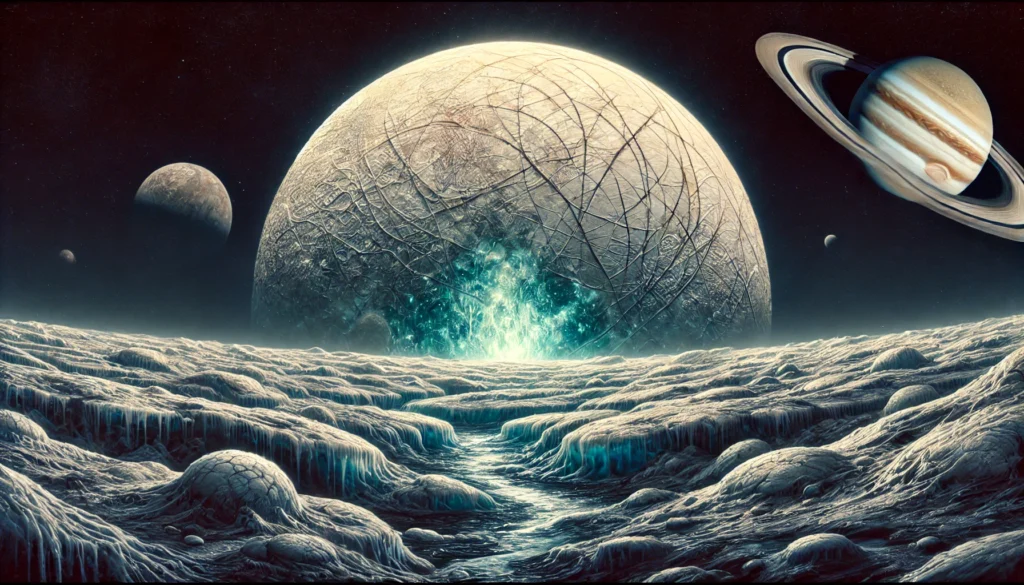Imagine life thriving in the most unimaginable places—beneath the ice caps of Antarctica, within boiling acidic springs, or even on distant planets where conditions are far more extreme than on Earth. Welcome to the fascinating world of astrobiology, where scientists explore the possibility of life in extreme environments both on Earth and beyond.
Introduction
Astrobiology is the study of life in the universe, encompassing the origins, evolution, and potential for life beyond Earth. One of the most intriguing aspects of this field is the exploration of life in extreme environments. These environments—where conditions are far from the hospitable climates we humans are accustomed to—offer clues to how life might survive on other planets or moons. In this blog, we’ll delve into the science of astrobiology, examining how life endures in the harshest environments and what this could mean for our search for extraterrestrial life.
What Makes an Environment “Extreme”?
When we think of life on Earth, we typically envision lush forests, vast oceans, and temperate climates. However, many organisms, known as extremophiles, thrive in environments that would be lethal to most life forms. These extreme environments include:
Hyperthermophilic Environments: These are areas with extremely high temperatures, such as hydrothermal vents found deep in the ocean. Organisms like Thermus aquaticus, a type of bacteria, can survive in temperatures exceeding 100°C (212°F).
Acidic and Alkaline Environments: Life can also be found in highly acidic or alkaline conditions, like those in sulfuric hot springs or soda lakes. For instance, Acidithiobacillus ferrooxidans, a bacterium, thrives in highly acidic environments with pH levels as low as 1.5.
Radiation-Resistant Environments: Certain organisms can survive extreme levels of radiation. The bacterium Deinococcus radiodurans is known for its extraordinary resistance to radiation, capable of withstanding doses that would be fatal to humans.
Dry and Desiccated Environments: Life can withstand severe dryness, like in the Atacama Desert in Chile, one of the most arid places on Earth. Microorganisms like Chroococcidiopsis have adapted to survive with minimal water.
Case Study: Life Beneath Antarctic Ice
One of the most remarkable discoveries in astrobiology is the existence of microbial life beneath the ice of Antarctica. In Lake Vostok, a subglacial lake buried under nearly four kilometres of ice, scientists have found evidence of microorganisms that survive without sunlight, relying on chemical energy derived from the minerals in the surrounding rock. This discovery is significant because it suggests that life could exist on icy moons like Europa or Enceladus, where similar conditions might prevail.
Astrobiology and the Search for Extraterrestrial Life
Astrobiologists study extreme environments on Earth to better understand the potential for life elsewhere in the universe. For example, the discovery of extremophiles in hydrothermal vents has led scientists to speculate that similar life forms could exist on Jupiter’s moon Europa, which is believed to have a subsurface ocean heated by geothermal activity.
Another intriguing location is Mars, where evidence of ancient riverbeds and minerals suggests that liquid water once existed on the planet’s surface. In recent years, NASA’s Perseverance rover has been exploring the Jezero Crater, searching for signs of past microbial life. The discovery of extremophiles on Earth that can survive in conditions similar to those on Mars gives scientists hope that life might once have thrived—or may still exist—on the Red Planet.
The Role of Space Missions in Astrobiology
Space missions play a crucial role in astrobiology. The ongoing exploration of Mars, the study of icy moons like Europa and Enceladus, and future missions to distant exoplanets are all part of the quest to discover whether we are alone in the universe. Missions like NASA’s Europa Clipper, which is set to launch in the 2020s, aim to study the habitability of Europa by examining its ice shell and subsurface ocean.
The study of extremophiles on Earth also helps prepare for these missions. By understanding how life can survive in Earth’s most extreme environments, scientists can better design experiments and instruments to detect life in similar environments on other planets.
Challenges in the Search for Extraterrestrial Life
While the prospects are thrilling, the quest to discover extraterrestrial life is riddled with challenges. One of the main hurdles is the immense distances involved in space exploration. Even within our solar system, reaching other planets or moons takes years of travel, and communicating with spacecraft takes time due to the vast distances.
Another challenge is the potential for contamination. Space agencies like NASA have strict protocols to prevent Earth organisms from contaminating other planets, which could jeopardize the search for extraterrestrial life. Conversely, there is also the concern of potentially bringing extraterrestrial organisms back to Earth and the unknown risks that might pose.
Lastly, the interpretation of data is complex. Finding life isn’t as simple as spotting a Martian walking across the landscape; it often involves detecting subtle chemical signatures or fossilized remains of microorganisms. Determining whether these signs are indeed evidence of life or merely the result of non-biological processes requires meticulous analysis and peer review.

The Future of Astrobiology
Astrobiology is still a young science, but it has made significant strides in recent years. With technological advancements, the future holds great promise. Upcoming missions to Mars, Europa, and beyond will likely yield new insights into the potential for life elsewhere in the universe. The James Webb Space Telescope, for example, is already revolutionizing our understanding of exoplanets by analyzing their atmospheres for signs of life.
On Earth, scientists continue to study extremophiles to learn more about the limits of life and how it might survive on other planets. These studies not only enhance our understanding of biology but also have practical applications in fields like medicine, environmental science, and even industry.
Conclusion
The science of astrobiology offers a glimpse into one of humanity’s oldest questions: Are we alone in the universe? By studying life in extreme environments on Earth, scientists are laying the groundwork for answering this question. Whether we eventually find life on Mars, beneath the icy crust of Europa, or in the atmosphere of a distant exoplanet, the pursuit itself expands our understanding of life and its possibilities.
As we look to the stars, the search for life in extreme environments reminds us of the resilience of life and the endless curiosity that drives scientific exploration. Perhaps one day, we’ll find that life, in some form, is far more common in the universe than we ever imagined.
Author’s Note:
Exploring the science of astrobiology is like embarking on an interstellar journey from the comfort of our own planet. The study of life in extreme environments not only fuels our imagination but also challenges our understanding of what life is and where it can exist. I hope this blog has sparked your curiosity about the possibilities that lie beyond our world.
G.C., Ecosociosphere contributor.
References and Further Reading:
- NASA Astrobiology Institute: Link
- NASA | Fight for OUR Earth and Humanity. https://asahiramen.com/nasa/
- extraterrestrial life | AMNH. https://www.amnh.org/explore/ology/ology-cards/069-extraterrestrial-life





Comments
I was suggested this web site by my cousin Im not sure whether this post is written by him as no one else know such detailed about my trouble You are incredible Thanks
Usually I do not read article on blogs however I would like to say that this writeup very compelled me to take a look at and do so Your writing taste has been amazed me Thanks quite nice post
Noodlemagazine Terrific article! We’ll include a link to this inspiring post on our site. Keep up the awesome work